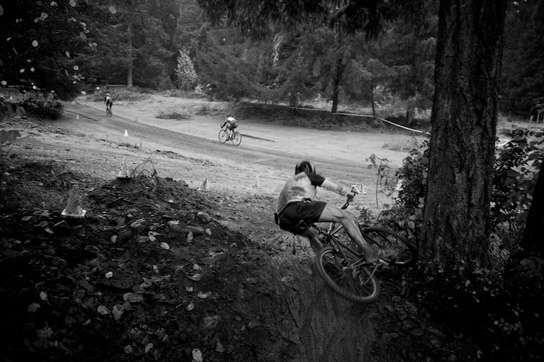 Crashes are certainly common in cyclocross. Making full frame photographs of them is the challenge. All of the pictures in this post were made Sunday. To see the full take from the day's race, click on the image. Tim Labarge and Pamela Royal were out there making pictures for pdxcross, too. © Mike Davis/2010
Crashes are certainly common in cyclocross. Making full frame photographs of them is the challenge. All of the pictures in this post were made Sunday. To see the full take from the day's race, click on the image. Tim Labarge and Pamela Royal were out there making pictures for pdxcross, too. © Mike Davis/2010
Someone asked me this week how to stay fresh when making pictures of the things you’ve photographed many times. The question is a variation of how you avoid burnout, except its applied to individual settings instead of the breadth of what you photograph.
The answer to the question can apply to both contexts.
First, let me say that circumstances outside of your control can create the feeling of being stuck in a rut. You work for a publication or clients who always want the same pictures from the same events that they sponsor or cover or have interest in. I’ve been there. It’s boring but only within that context. You can usually satisfy that need in short order and move on to do something more interesting - if trying to change their wants is futile.
The point here is to talk about how to help yourself grow continually, regardless of the circumstance, specific or general.
 Wide scenes are the most challenging to make interesting. © Mike Davis/2010
Wide scenes are the most challenging to make interesting. © Mike Davis/2010
The context that prompted the initial question was about making pictures at cyclocross bicycle races. I do, almost every Sunday from September through early December for the past three years - eight races a day that last from 40-60 minutes each and start at 9 a.m. and end about 4 p.m. Each week’s venue is different but the course venues are the same year to year, like photographing football at the same set of high schools or colleges every fall.
That’s about 100 races each fall. You’d think I’d be crazy to keep going back. But every week is a new experience full of layers of opportunity and experience that I find refreshing. I come home exhausted but renewed every Sunday.
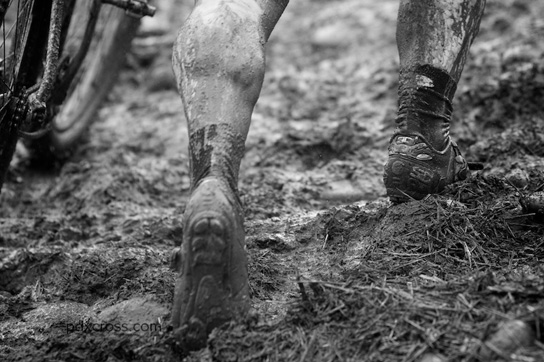 Treat a telephoto as if it were a wide angle. © Mike Davis/2010
Treat a telephoto as if it were a wide angle. © Mike Davis/2010
As with most things, attitude determines a lot. If you go into something you’ve done many times before and you’re thinking that it’s going to be boring or just like the last time, then it probably will be, no matter what you do.
So the first step is to change your attitude. Be open to the newness, to the differences that are inevitable in any human endeavor, no matter how many times you’ve seen it.
Challenge yourself to say something different with your pictures this time. You can do this in a variety of ways.
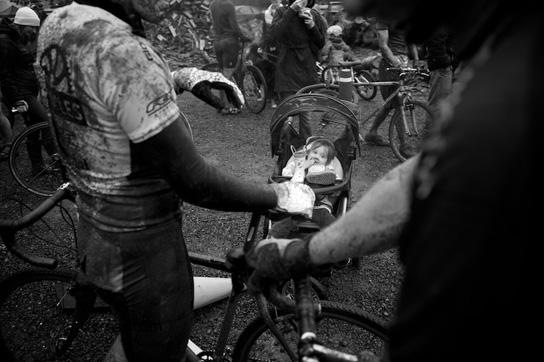 Setting out to say something beyond it happened. In cyclocross, family is an important aspect. © Mike Davis/2010
Setting out to say something beyond it happened. In cyclocross, family is an important aspect. © Mike Davis/2010
Be sensitive to what is different in what you’re photographing. Maybe it’s the light, the weather, the people involved, the equipment, the crowd. Research the subject, talk to people involved beforehand, learn something you didn’t know and make pictures that grow out of that expanded understanding.
Create a new process for covering the event. Most people stand in the same place at the same distance as the last time they covered the event. I figured out that cyclocross courses have a flow to them. Each part of the course can produce types of pictures. If you try to cover the whole course in each race, you’ll miss the moments that define each part of the experience. So I started sticking to one part of the course in each race long enough to make a set of images that explore the range of that section. Then I’d move on to a different section of the course in the next race.
Change your equipment. Everyone tends to use the same lenses. Use a different lens, and only that lens. This will force you to see differently. Or use the same lenses in a new way. Treat the telephoto like a wide angle and vice versa.
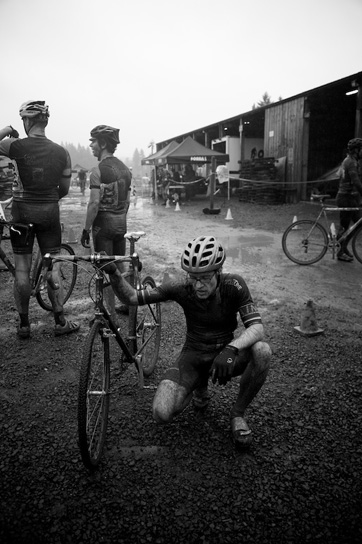 Placing things in context instead of simplifying, giving subjects room to breath creates a felling of being there. © Mike Davis/2010
Placing things in context instead of simplifying, giving subjects room to breath creates a felling of being there. © Mike Davis/2010
Tell a story. You can build a narrative about something that goes beyond a beginning, middle and end. You can say more than “It happened.” Chose a layer of the event and build a set of photographs around an idea or a quality or an aspect of what the event is about.
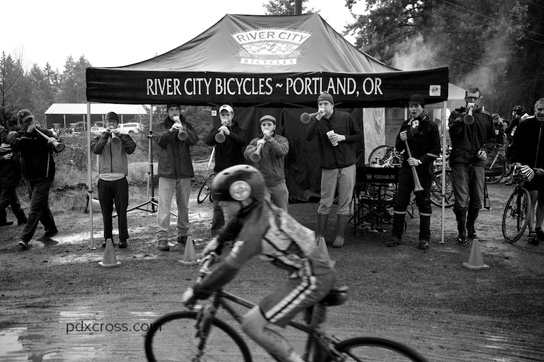 Getting to know the people involved can attune you to things that might happen. © Mike Davis/2010
Getting to know the people involved can attune you to things that might happen. © Mike Davis/2010
For instance:
Follow a relevant person through the course of the event and speak to the uniqueness of that person.
Make a set of pictures about one spot in the event.
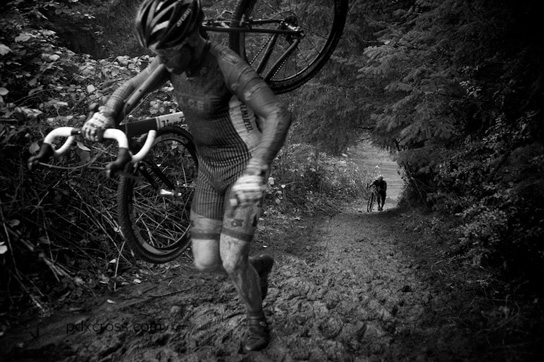 Stay with a spot until you've made a picture that conveys a quality. © Mike Davis/2010
Stay with a spot until you've made a picture that conveys a quality. © Mike Davis/2010
Build a set of pictures around light or color.
Make a set of pictures from within three feet of the subjects; make a set that includes the whole scene as it changes.
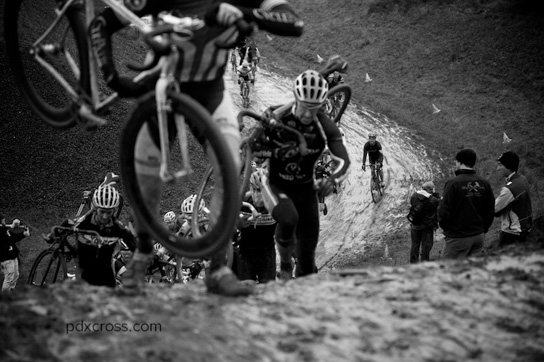 This is another spot, a similar compositional approach but a different feel. © Mike Davis/2010
This is another spot, a similar compositional approach but a different feel. © Mike Davis/2010
Make a set of portraits of people who were there. And within that set say something specific about them - their expressions, their clothing, where they stood, what they were eating, how much they care about the event. Something, anything.
If none of this works, change your career. Go pump gas. Not that there’s anything wrong with pumping gas.
 Getting closer than you think you can with a given lens can work.
Getting closer than you think you can with a given lens can work.
